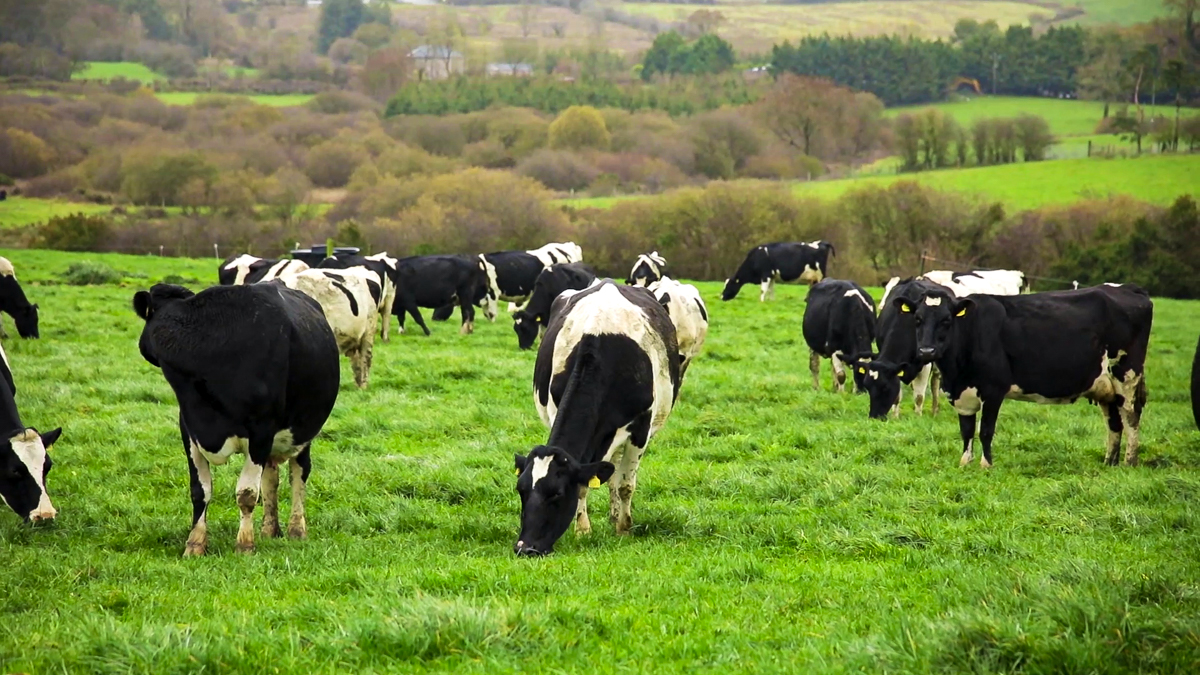The legal challenge against the government’s fifth Nitrates Action Programme (NAP) taken by An Taisce has been described as one of the “biggest challenges” currently facing the Irish dairy industry.
Speaking to Agriland, the president of the Irish Creamery and Milk Suppliers’ Association (ICMSA), Pat McCormack raised concerns about the outcome of the case and the future of Ireland’s nitrates derogation.
The High Court began hearing the legal challenge yesterday (Tuesday, December 12). The case is due to run for four days.
The NAP comprises a range of measures that are intended to protect water quality from agricultural pollution in order to meet the requirements of the EU’s Nitrates Directive.
An Taisce has claimed that successive programmes have failed in their objective, as Ireland’s water quality has “continued to deteriorate over the past decade”.
An Taisce nitrates case
An Taisce claims that the independent environmental assessment of the fifth NAP “acknowledged an uncertainty as to whether the main measures relied upon would adequately prevent water pollution, which could potentially impact on protected European sites”.
“We believe accordingly that there is a clear basis to contend that legal threshold was not met for the measures proposed in the NAP,” An Taisce said.
The decision by An Taisce to take the legal challenge is “disappointing”, McCormack said. The ICMSA, the Department of Agriculture, Food and the Marine (DAFM), and the Irish Farmers’ Association (IFA) are notice parties to the challenge.
Speaking to Agriland, the outgoing ICMSA president said it’s “critical” that the legal challenge will see a “positive” result. However, he does not believe there will be a result before Christmas.
“I suppose it’s one of the biggest challenges that faces our industry at this point in time.
“And given the whole move from 250kg [of organic nitrogen (N)/ha] to 220kgN/ha, it’s probably the first time since 1983 that the handbrake has yet again been pulled, and it’s certainly been a short period of time between 2015 and where we are today,” he said.
The challenge is “going to cost ICMSA, amongst others, a significant amount of money, but ICMSA members are also taxpayers and that’s hugely frustrating,” McCormack said.

“What is very, very clear is our set of accounts at our AGM [annual general meeting], and where our funding comes from. It is assembled, in the vast majority of cases, by the dairy producers on behalf of some of their suppliers who are ultimately our members.
“There isn’t that level of transparency out there with our NGOs [non-governmental organisations]. I suppose the big question is where does their funding come from?” he questioned.
“We must remember that the farmers of Ireland are taxpayers, irrespective of which farm organisation [they are in], and will be contributing to An Taisce’s legal bill, by no choice but by virtue of being a taxpayer to this country, and as I said, our statement of accounts is very clear. I’d like to see transparency on all sides,” McCormack said.
Raising concerns about the outcome of the case, he said that the “significant” investments made by farmers and processors could be left as “white elephants” in the years ahead.
This would put an “additional financial burden” on the producer and on the processor, affecting their ability to “survive the challenges of the years ahead”, McCormack said.
Water quality
“I’d be concerned about the future of the derogation. I think in the debate there has been too much time given over the last four months talking about the retention of 250kg/N/ha,” he said.
It’s “critical” that the “best practice and the best of science” is now followed, he said adding that there’s an “obligation” on the Minister for Agriculture, Food and the Marine, Charlie McConalogue to implement such.
McCormack believes there is “scope to soften the blow” of the derogation cut, however, he said that farmers need to “get ready now to defend” the 220kg/N/ha mark for the years ahead.
“Farmers can make adjustments to live within the 220kg/N/ha, possibly even with movement there, the equivalent of a 230kg/N/ha-235kg/N/ha, somewhere in between, which halves the blow.
“But if we’re to move to 200kg/N/ha or lose that derogation completely, we’re heading into a very, very different landscape, a very bleak landscape for the dairy industry in Ireland,” he said.
